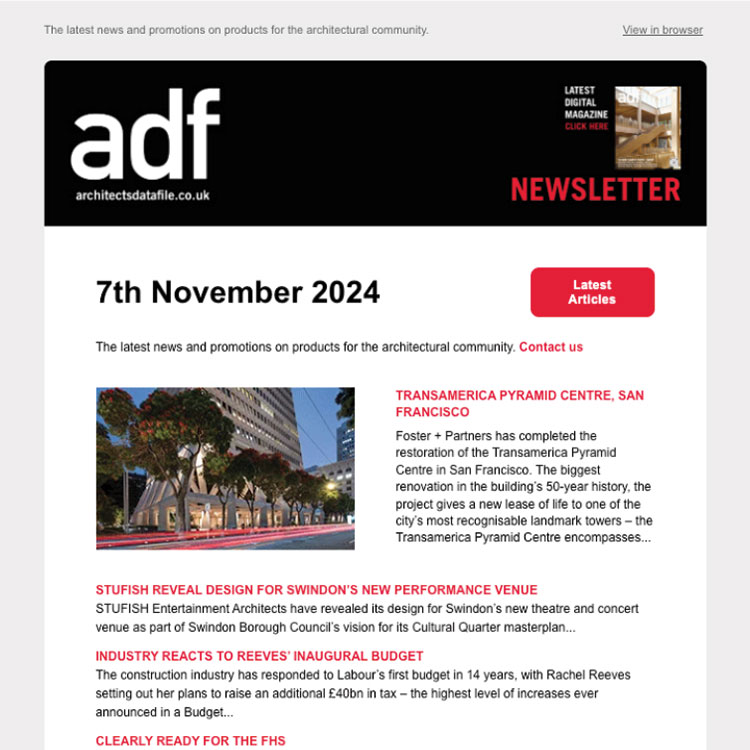Balconies can enhance residential developments and provide the amenity of outdoor living space for residents. Lee Barber of Balcony Life explains how bolt-on cantilevered steel systems can avoid structural issues and problems with thermal bridging
Bolt-on cantilevered steel balconies are an architectural feature that is becoming increasingly popular both in new build apartments and the housing market more widely, as they provide visual interest and signify a quality development to prospective buyers. Balconies offer homeowners an outdoor living space and are seen as a desirable addition to a dwelling.
From a structural perspective the difficulty with balconies (and for that matter any architectural feature located outside of the building’s insulation envelope), is how to support the balcony while avoiding a thermal bridge between the internal building structure and the balcony steel frame in order to comply with the Building Regulations Approved Documents and meeting the requirements of the thermal modelling calculations for limiting thermal bridging. Thermal bridging occurs when conductive materials, such as steel or concrete, provide a path for heat energy to flow across a building’s thermally insulated layer, resulting in heat loss and the potential for condensation to form.
One solution to this problem is to design the balcony with support posts on concrete foundations and bolt the balcony steel frame to the outer masonry leaf. This approach is likely to avoid the thermal bridging issue and is generally the only viable option on existing properties. However the dwelling outer leaf may not be load-bearing, for instance lightweight cladding materials, and support posts are widely considered to be detrimental to the appearance of new build dwellings. Fortunately for architects the construction industry has addressed these issues with companies specialising in bolt-on cantilever steel balconies ffering complete balcony packages which are practical and excellent value for money, and comprise the balcony and structural thermally broken building connection systems.
Typically these balcony packages are installed as a first fix and then a second fix item. The first fix installation commences with the building connection plate which, depending upon the floor construction, is either bolted to solid timber joists or a concrete floor slab. The essential structural thermal break component is bolted to the connection plate and is ideally located within the building insulation layer, thereby minimising or eliminating the thermal bridge. A steel stub is bolted to the structural thermal break, which is designed to project beyond the face of the external envelope and position the balcony steel frame at the correct floor level. After the first fix is installed, the contractor continues with the wall construction so that when completed the stub faceplates are left exposed for the second fix balconies.
The installation of the balconies usually takes place towards the end of the build programme on site and is simply a matter of offering the balcony steel frame up to the stub face plates with lifting equipment and bolting them on, after which the balcony glass balustrade or metal railing balustrade and balcony decking are installed. Balcony rainwater drainage is frequently raised as a concern, but here again companies specialising in bolt-on cantilever steel balconies provide a solution with a controlled rainwater drainage system which eliminates the need for unsightly external rainwater pipes and avoid taking rainwater pipes into the building, which could have the potential to leak and cause damage to the building fabric and interior. The principle of controlled rainwater drainage is very simple with rainwater being allowed to flow into the balcony, and prevented from draining through the balcony with a soffit panel to the underside of the balcony. The rainwater is discharged from within the balcony through discreet circular drainage holes located – along the front of the balcony. Typically the whole balcony steel is coated with galvanised zinc so that rainwater particularly within the balcony cannot erode the steel, thereby maintaining structural integrity. Balcony specifiers should always ensure that balcony steelwork is galvanised for this reason.
Bolt-on cantilever steel balcony packages allow architects the opportunity to include their own design preferences with a variety of options. These include contemporary frameless glass, traditional metal or clad wall balustrade, tinted glass panels, applying vinyl transfers to the glass panels to the specifier’s colour and design pattern, decking type and colour, as well as a wide choice of RAL colours to select from for the balcony steelwork and the inclusion of a privacy screen. Bolt-on steel balconies also offer flexibility in terms of their size and configuration, that allows the architects’ intentions to be realised, or they can simply opt for specialist balcony manufacturers’ standard balcony designs in order to achieve a cost saving.
Specialist balcony packages allow architects to incorporate tried and tested balcony solutions into their house type designs – with responsibility for balcony design, manufacture and installation resting with one sub-contractor rather than being divided between the architectural designer, structural designer, steel fabricator and installer. As further assurance, balcony specialists will attend consultant and site design meetings and provide free technical support throughout the design and construction process so that the balcony package they manufacture is co-ordinated with all aspects of the building structure.
Lee Barber is architectural design manager for Balcony Life


